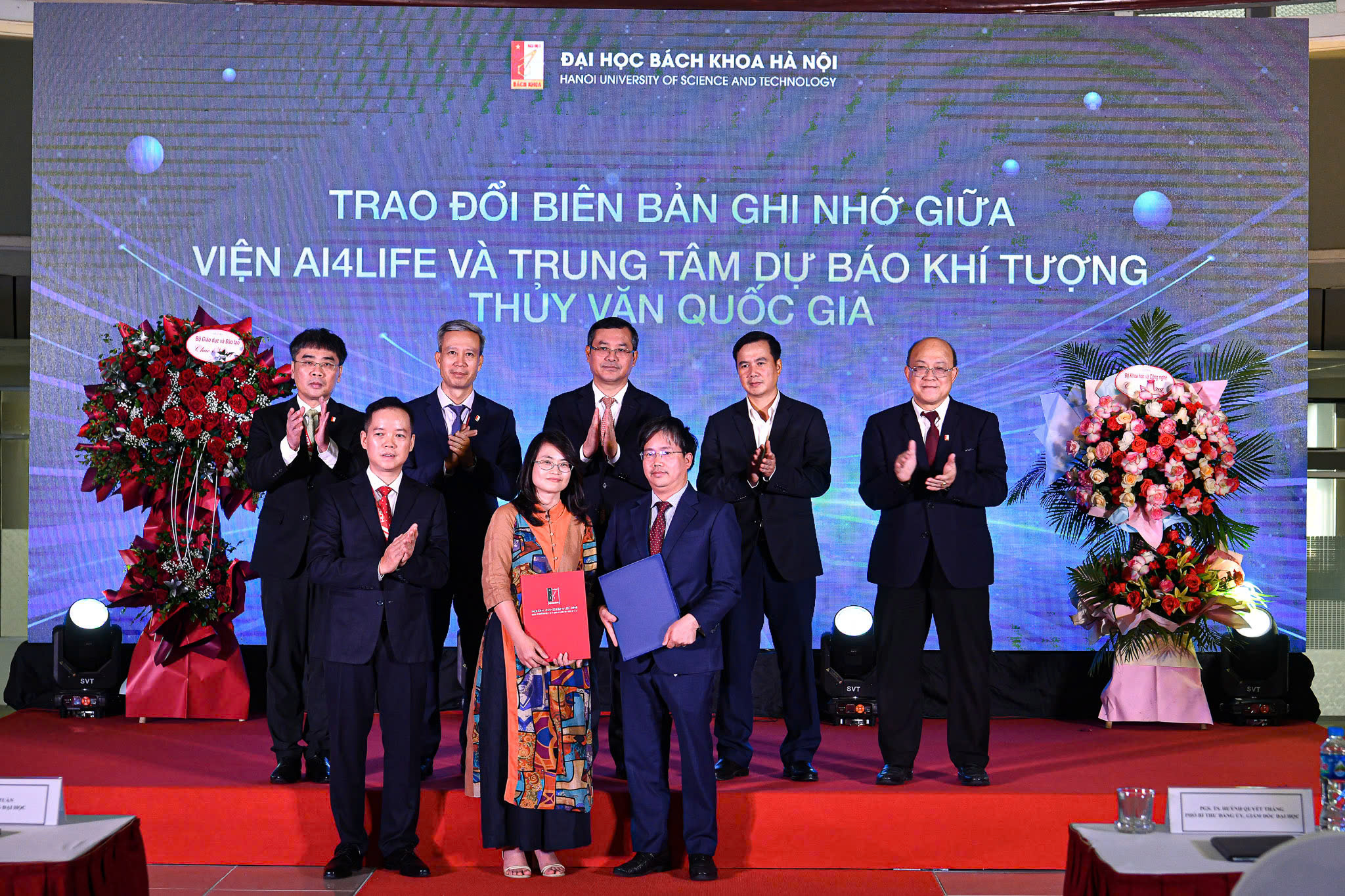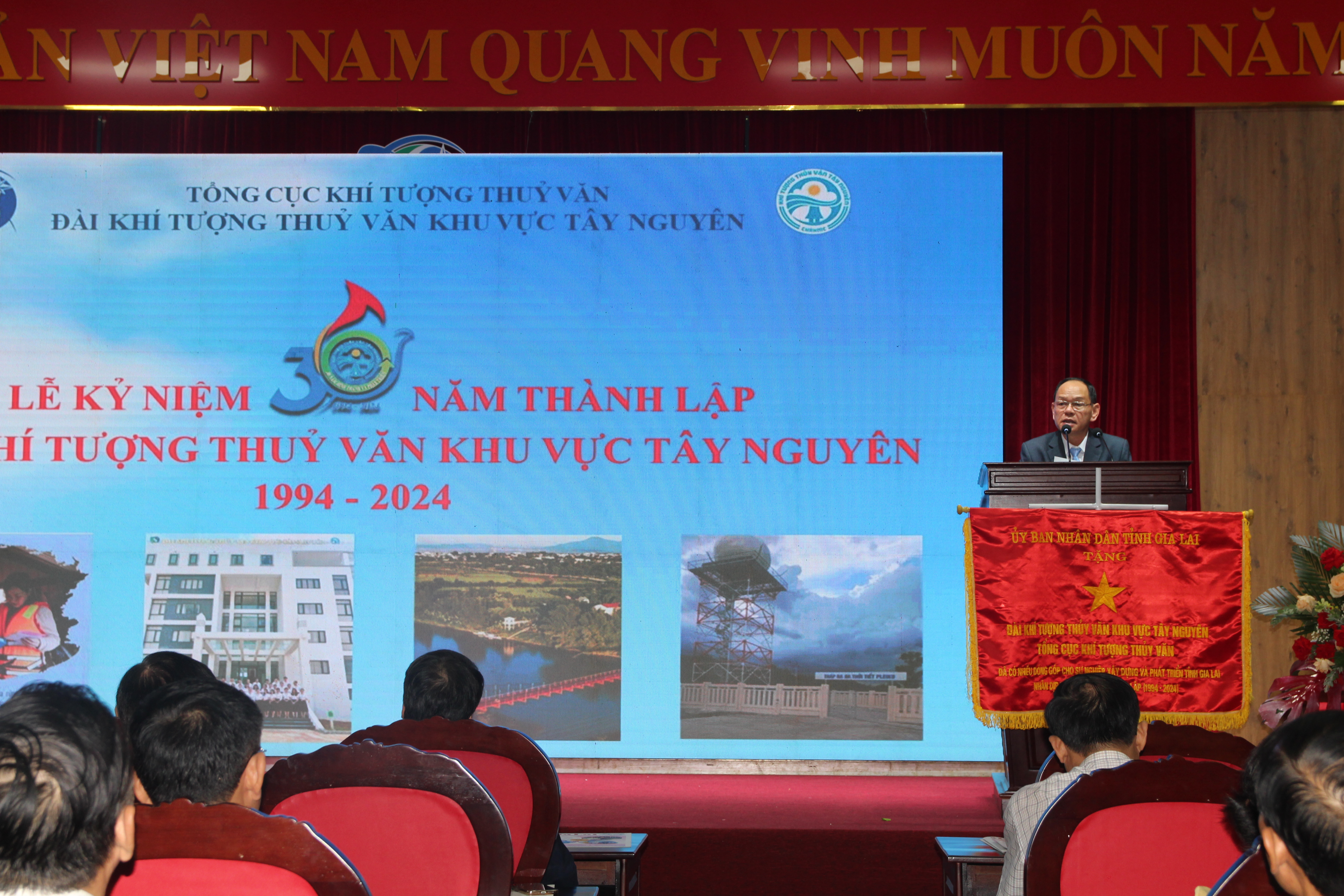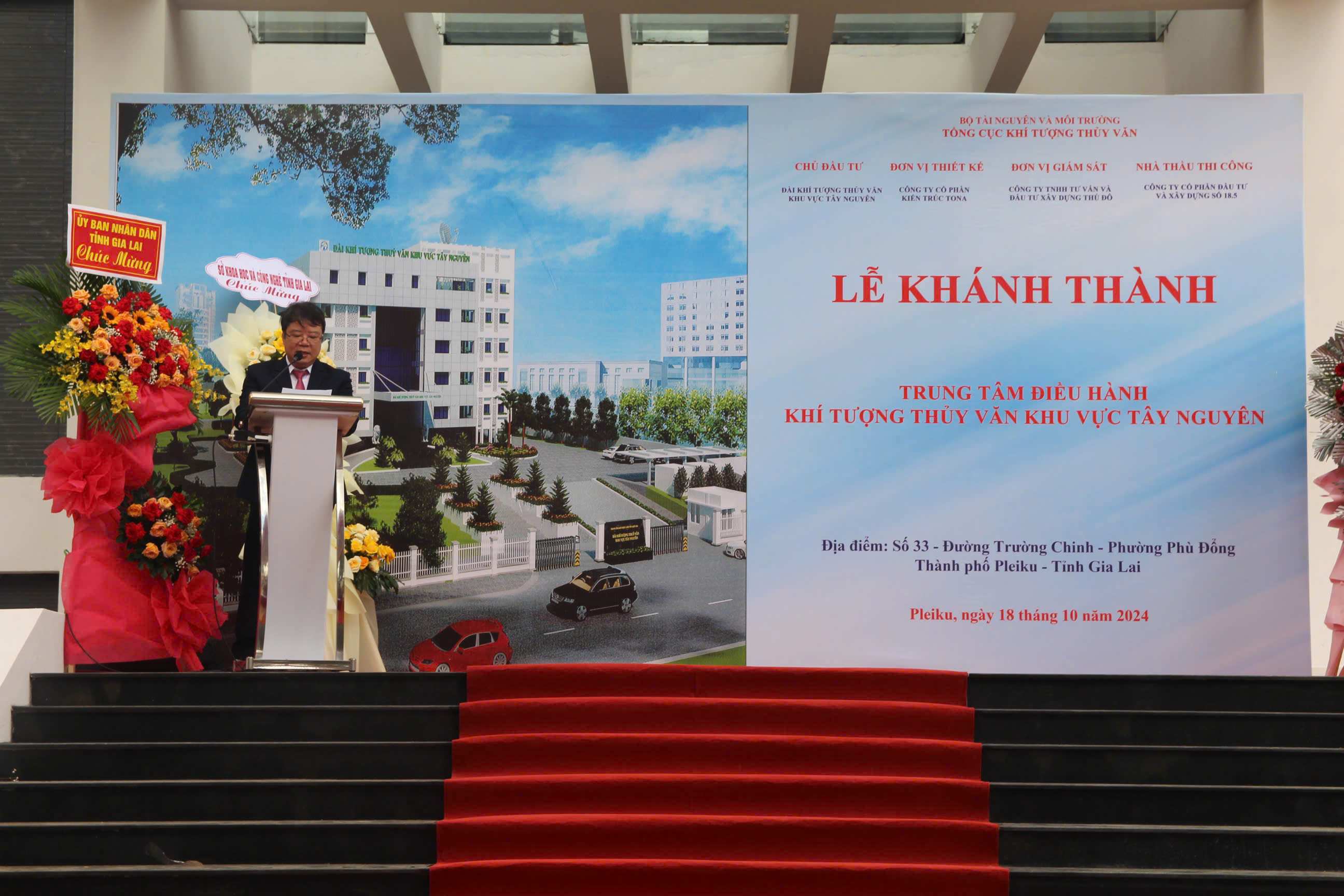|
TT |
Tên bài và tác giả |
Số Trang |
|
1 |
Research solutions biological activated sludge for seafood wastewater treatment Vinh Son Lam1*, Vu Phong Nguyen1, Phu Huynh1 1 Hochiminh University of Technology (HUTECH), Vietnam. Add: 475 A Dien Bien Phu Street, 25 Ward, Binh Thanh District, Hochiminh City, Vietnam; lv.son@hutech.edu.vn; nv.phong@hutech.edu.vn; h.phu@hutech.edu.vn * Correspondence: lv.son@hutech.edu.vn; Tel: +84–903399800 Abstract: This article presents aquatic wastewater treatment with the addition of probiotics. Due to the high salinity (5–10‰), the microorganisms are inactive because plasmolysis occurs in the presence of table salt, the contraction of the protoplasm away from the cell wall of the bacteria due to dehydration under the action of osmotic pressure, leading to gaps between the cells and the cell membranes. The use of probiotics containing Saccharomyces yeast in combination with some bacteria strains to treat aquatic wastewater with high salinity has drawn much interest, but there are no specific studies. By employing experimental method, using two synthetic preparations Microbe–Lift IND and EM–WAT1 contribute to improving the treatment efficiency of activated sludge at different salinity to give the appropriate dosage for application into practice. Research results show that the optimal load is 4.5kg COD/m3/day, with a retention time of 8 hours, the optimal salinity after the test is about 5 ‰ to 10 ‰, using 0,25mL Microbe–Lift IND and EM–WAT1 for a liters of wastewater. Keywords: Halophilic microorganisms; High salinity; Salty favored microorganisms; Seafood wastewater. |
1 |
|
2 |
Calculation of methane gas emissions (CH4) from domestic waste water in Nhue–Day River basin Cai Anh Tu1*, Nguyen Thi Kim Anh2, Le Van Quy2, Pham Thi Quynh2 1VNU University of Science, Vietnam National University, Hanoi; caianhtu1984@gmail.com 2Viet Nam Institute of Meteorology, Hydrology and Climate Change; nguyenkimanh1004@gmail.com;vanquymt@gmail.com; quynhpt0310@gmail.com * Correspondence: caianhtu1984@gmail.com; Tel.: +84–936324567 Abstract: The process of domestic wastewater treatment has created a large amount of greenhouse gases (GHG). However, the measure for evaluating domestic wastewater treatment is only the treatment efficiency. Meanwhile, the factors to assess the possibility of generating GHG emissions have not been concerned. The Nhue–Day River basin plays an important role on the socio–economic development; therefore, one of the problem needs to be filled with concern is the level of GHG emissions from waste sources, including domestic wastewater. In order to contribute to forecast and evaluate the domestic wastewater impacts on the generation of GHG emissions, the study has been implemented. The main methods taken as synthesis, analysis, and inheritance of research documents and calculations are based upon the guidance of the Intergovernmental Panel on Climate Change, 2006, chapter 5,6 – Wastewater disposal and treatment and other Vietnamese studies on climate change. The study has calculated GHG emissions from wastewater in the Nhue–Day River basin through the use of septic toilets, other toilets and centralized treatment plant by aerobic technologies for the current status (2019) and the scenario in 2030. Thereby, it shows that the CH4 gas is mainly generated from anaerobic treatment of domestic wastewater with total CH4 emissions currently at 52,850,201.55 Gg CH4/year (processed 49,742,761.24 Gg CH4/year accounting for 94.12%); and for the scenario up to 2030 is 212,764,669.79 Gg CH4/year (processed 212,700,144.64 Gg CH4/year at 99.97%). Keywords: Nhue–Day River basin; Methane gas emissions; Domestic waste. |
9 |
|
3 |
Assessing land use change in the context of climate change and proposing solutions: Case study in Gia Lai province, Vietnam Nguyen Ninh Hai1, Nguyen Tuan Anh1, Nguyen Minh Ky1*, Bach Quang Dung2*, Nguyen Thi Nhu Huong3, Nguyen Hoang Dieu Minh1, Nguyen Thi Ly1 1Nong Lam University of Ho Chi Minh City, Gia Lai campus, Tran Nhat Duat Street, Dien Phu Ward, Pleiku City, Gia Lai Province, Vietnam. 2Viet Nam Meteorological and Hydrometeorological Administration, Ha Noi, Vietnam. 3Pleiku High School, Gia Lai Province, Vietnam. *Correspondence: nmky@hcmuaf.edu.vn; dungmmu05@gmail.com; Abstract: The study presents the results of the assessment of land use change in the period 2014–2019 in Chu Pah district, Gia Lai province and proposed solutions. The research used the methods including data collection, spatial analysis, stakeholder and expert analysis. Remote sensing imagery (Google Earth) is employed to interpret, and the conducted field survey to verify in 14 communes and towns in order to create the current map of land use with high accuracy. For instance, the group of agricultural land changes the largest with the conversion of annual crop land into perennial crops. The area of residential land increases due to the increasing demand of residential land and the population growth. In addition, the group of unused land decreased relatively high mainly to meet the needs of cultivation and afforestation. The negative impacts of climate change also contribute to change the purpose and status of land resources in Chu Pah district. The results are meaningful in providing database for establishing land use status quo map and making decisions on sustainable socio–economic development. Keywords: Land use change; Land management; Climate change; Google Earth; Remote sensing |
20 |
|
4 |
Prediction of potential for greenhouse gas mitigation and power recovery from a municipal solid waste landfill case in Tien Giang province, Vietnam Long Ta Bui1,2*, Phong Hoang Nguyen1,2 1Ho Chi Minh City University of Technology; longbt62@hcmut.edu.vn; nhphongee407@gmail.com 2 Vietnam National University Ho Chi Minh City *Corresponding author: longbt62@hcmut.edu.vn; Tel.: +84–918017376 Abstract: Research on landfill gases (LFGs) collection mainly consisting of CH4 and CO2 gases, is not only a solution to decrease environmental risks but also to utilize and generate an alternative clean power source of coal. Many typical landfill cases in Vietnam, which install a recovery system and remove captured CH4 by the flaring methods, are able to contribute to reducing significantly greenhouse gas (GHG) emissions with roughly 0.25 tCO2–eq/tons being equivalent to 7.8 million tons of CO2–eq/year. Furthermore, a wide range of LFG recovery projects financed by the World Bank was conducted on 27 landfills in 19 cities of Vietnam, which generated a potential of GHG emission reduction up to 1,116,068 tCO2–eq/year. However, quantification of biogas emissions for each landfill as a basis in order to design and construct a suitable recovery system always has to face many challenges. The purpose of this study to propose an integrated system including a database combined with mathematical models in a Web–based packaged software named EnLandFill to be able to accurately quantify the emission load of GHGs and estimate electricity production generating from recovered LFGs. On a case study of Tien Giang province, total maximum cumulative emissions of LFGs, CH4, and CO2, which is around 279 million m3, 145 million m3, and 134 million m3 respectively, have been forecasted in scenario 1 for the period of 2021–2030. Additionally, the annual electricity generation potential is highest in scenario 2, estimating a total value of over 800 million kWh. Keywords: Landfill; Munticipal Solid Waste; Methane; Models; Energy recovery potential. |
32 |
|
5 |
Green space study in 12 urban districts of Ha Noi using remote sensing data Hai Khuong Van1*, Trang Tran Huong2 1 Water Resources Institute; khuongvanhai@gmail.com 2Ha Noi University of Natural Resources and Environment; tranhuongtrang2608gmail.com * Correspondence: khuongvanhai@gmail.com; Tel.: +84–974183835 Abstract: Today, the environmental situation in urban areas becoming polluted, people are increasingly interested in and want to live in green cities. This paper uses the satellite image Landsat 8 and the method of calculating the vegetation index (NDVI) combined with the multivariate regression analysis to study and evaluate the change of greenery area for the inner districts of Hanoi period 2013–2016. The study results show that the greenery area is strongly correlated in the central districts and the average correlation in districts with high urbanization or agricultural areas. The green tree density in Ha Noi city is quite different between the central districts and suburbs. In the suburb such as Long Bien, Ha Dong, Nam Tu Liem, North Tu Liem, Tay Ho, Hoang Mai the green tree density in the people is quite high, exceeding TCVN 9257:2012. To be specific, Long Bien district has the highest green tree density, with 134.2 m2/person up to 11 times national standards. Meanwhile, central districts such as Dong Da, Hai Ba Trung, Ba Dinh, Hoan Kiem, Thanh Xuan have very low green tree density, lower than the minimum standard of TCVN 9257: 2012. To be specific, Dong Da is the lowest green tree density with 2.5 m2/person, lower than the TCVN 9257:2012 (> 12 m2/person) to 4.8 times national standards. Keywords: NDIV; Green tree; Remote sensing; GIS; Ha Noi City. |
53 |
|
6 |
Study on assessing the impact of climate change (temperature and rainfall) on rice yield in the Long Xuyen Quadrangle region (LXQR) – Vietnam Can Thu Van1*, Phan Thi Thuy Duong1 , Dinh Thi Nga1 , Luu Van Ninh2 Abstract: The impacts of climate change such as sea level rise, floods, droughts, saltwater intrusion, extreme weather ... are more and more evident. It causes significant damage to the socio–economy of Vietnam, especially the rice farming industry. In Vietnam, over the past 50 years, the average temperature has risen by about 2–3 degrees Celsius and the sea level has risen by about 20 cm. According to the simulation scenarios, it is estimated that by the end of the twenty–first century, compared to the average in the period 1980–2005, the average temperature in Vietnam could increase by 2.3 degrees Celsius, the annual rainfall would increase by about 5%. and the sea level could rise by 75 cm. There are many influencing factors affecting rice yield such as: meteorological factors, hydrology, saline intrusion, farming, pests,... This study, only the change in yield is assessed rice due to the impact of changes in temperature and precipitation in the context of climate change in the LXQR). By using the CROPWAT model to calculate rice yields with temperature changes and rainfall over periods according to climate change scenarios, the results show that under the RCP4.5 scenario when heat If the degree and rainfall increase, the rice yield decreases by 25.4% on average; RCP8.5 rice yield decreased by 25.3% on average.. Keywords: LXQR; Climate change; Cropwat; Rice yield; Assessment of the damage |
65 |
|
7 |
Research on assessment of suface water environment and sediment in seawater shallow area in Bac Lieu Province and proposing solutions for protection Phu Huynh1*, Han Huynh Thi Ngoc2 1Hochiminh City University of Technology (Hutech); h.phu@hutech.edu.vn 2 Hochiminh City University of Nature Resources & Environment; htnhan_ctn@hcmunre.edu.vn *Correspondence: h.phu@hutech.edu.vn; Tel: +84–966687548 Abstract: The quality of coastal water and sediment environment in Bac Lieu province tend to deteriorate due to waste (solid, liquid, gas) from the mainland into the river basins before being discharged into the sea. The paper presents the results of research on water quality in river basins dumping into the sea and coastal sediments. By methods of research, survey, observation, analysis of water quality, coastal sediment and calculation of WQI index, compared with QCVN 08–MT:2015/BTNMT, QCVN 43:2017/BTNMT (column sediments of salt water, brackish water). The results of physical and chemical parameters according to the dry season and the rainy season exceed the permitted threshold; pH: 6,69–9,20; TSS: 8–1,928 mg/l (exceeding 38.5 times) BOD5: 7–325 mg/l, COD: 13.8–602.6 mg/l, Ammonium (NH4+): 0.1–28.5 mg/l. WQI Nha Mat estuary: 37–73 and Ganh Hao seaport WQI: 52–68. Thus, the water environment in the continental river basins and coastal water quality shows signs of pollution from 2016 to 2020. Sediments in the coastal area in 2018, there are 6/12 samples with high Arsenic concentration, in 2019– 2020 there are 10/12 areas with Cd, Pb (0.57–0.83 mg/l). This result will serve the planning, planning, management and control of water quality, coastal sediments and river basins to the coast of Bac Lieu Province in the direction of sustainable development. Keywords: Bac lieu Province; The shallow seawater areas; Sediment; Water quality; WQI. |
74 |
|
8 |
Impact of climate change on seasonal distribution of flows in Ca basin, Central Viet Nam Huynh Thi Lan Huong1* 1Vietnam Institute of Meteorology, Hydrology and Climate change; huynhlanhuong@gmail.com *Correspondence: huynhlanhuong@gmail.com; Tel: +84–912119740 Abstract: Climate change has been impacting both natural and human resources greatly. Flow in river basins is subjected to strongly affect due to its direct relevance to climatic factors. Many changes in the distribution of runoff on river basins throughout the year due to the impact of climate change (CC) have been observed. In some areas, the flood season tends to shift gradually towards the end of the year, making the flood season appear later than before, but there are also areas where the flood season occurs earlier. The paper specifically analyzes changes in the distribution of flood season in a year under the impact of climate change in some areas in the Ca River basin, central Viet Nam.. Keywords: Climate change; River flow; Flow distribution; Ca River basin |
85 |



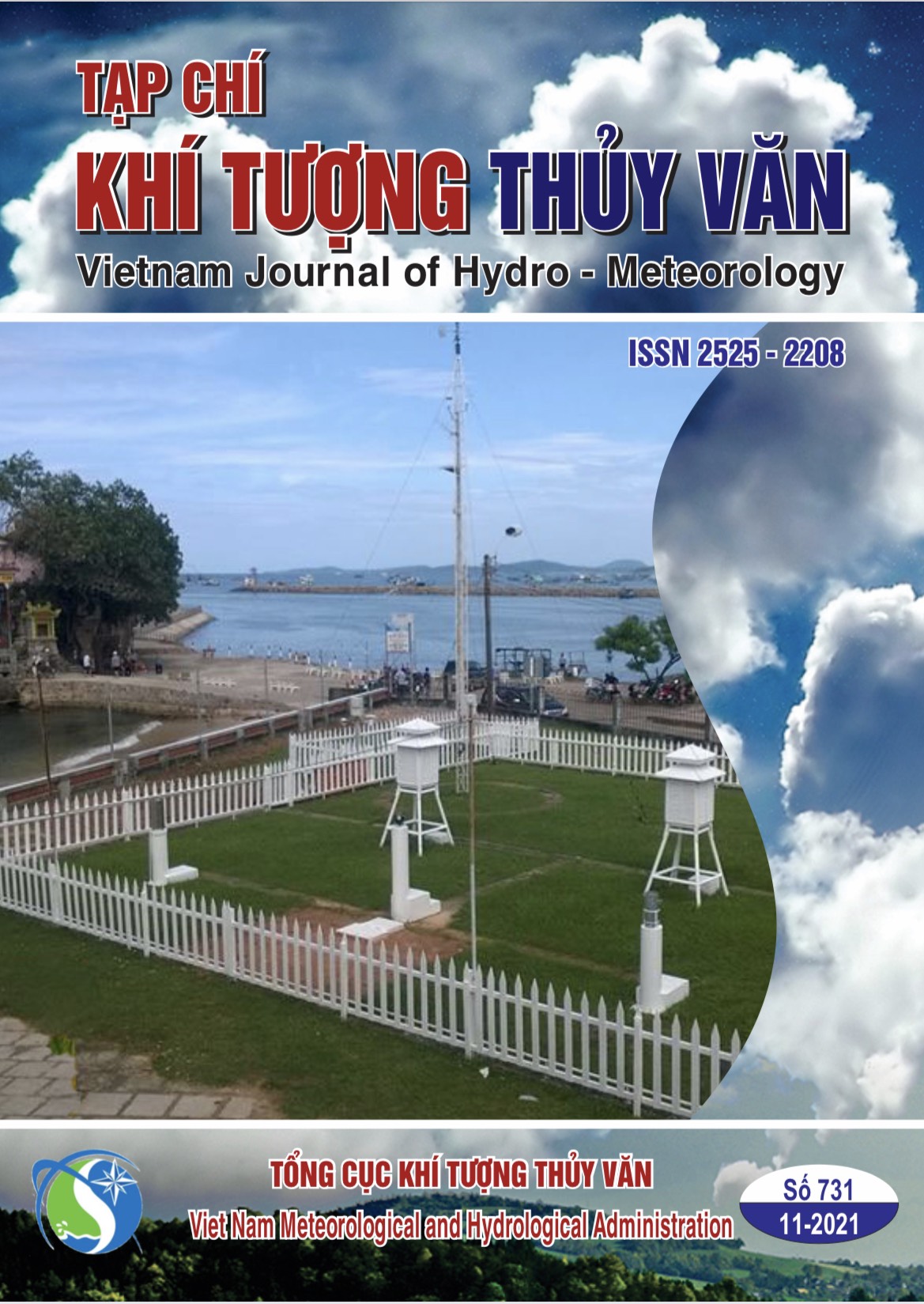
.jpg)
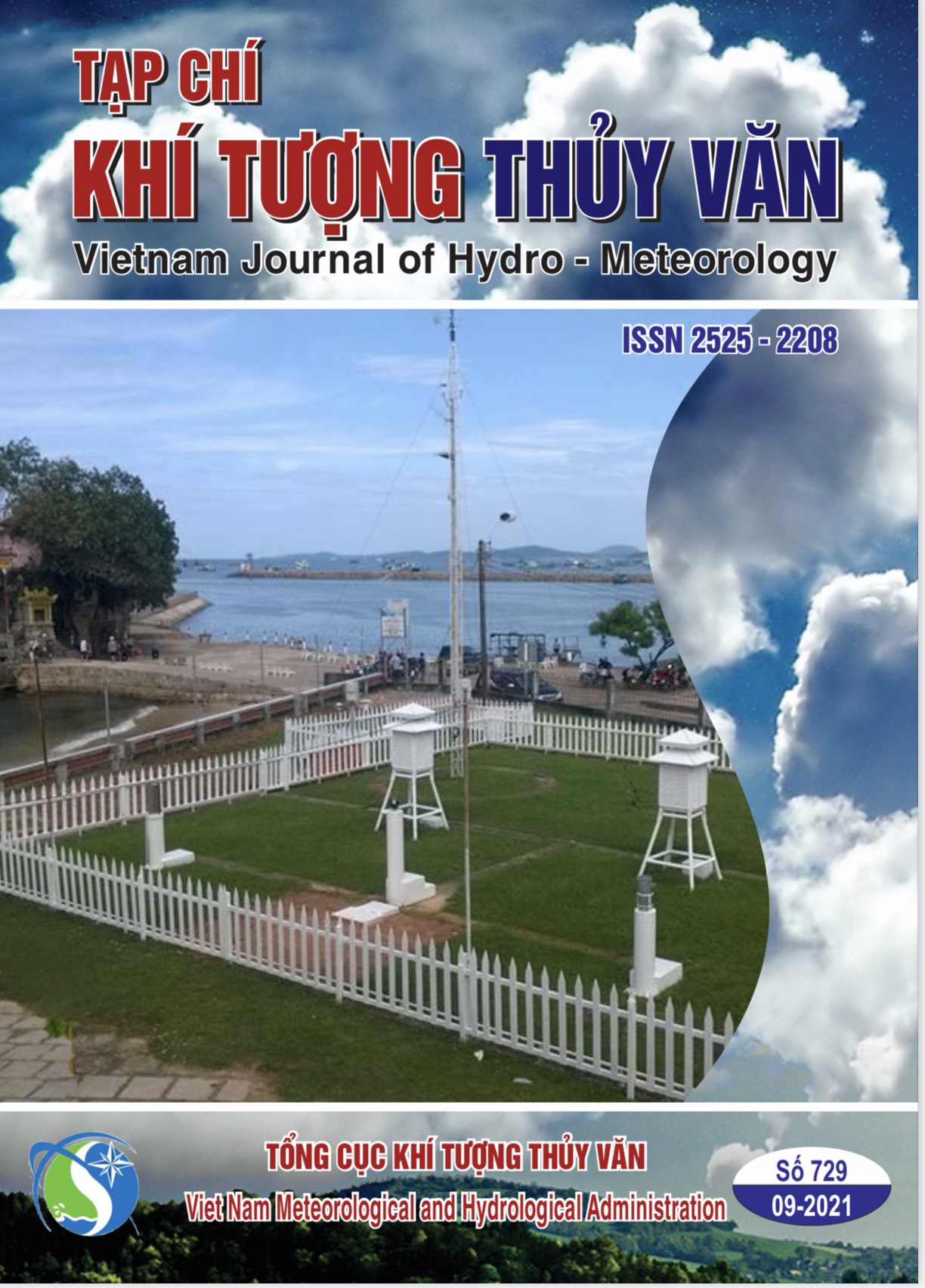

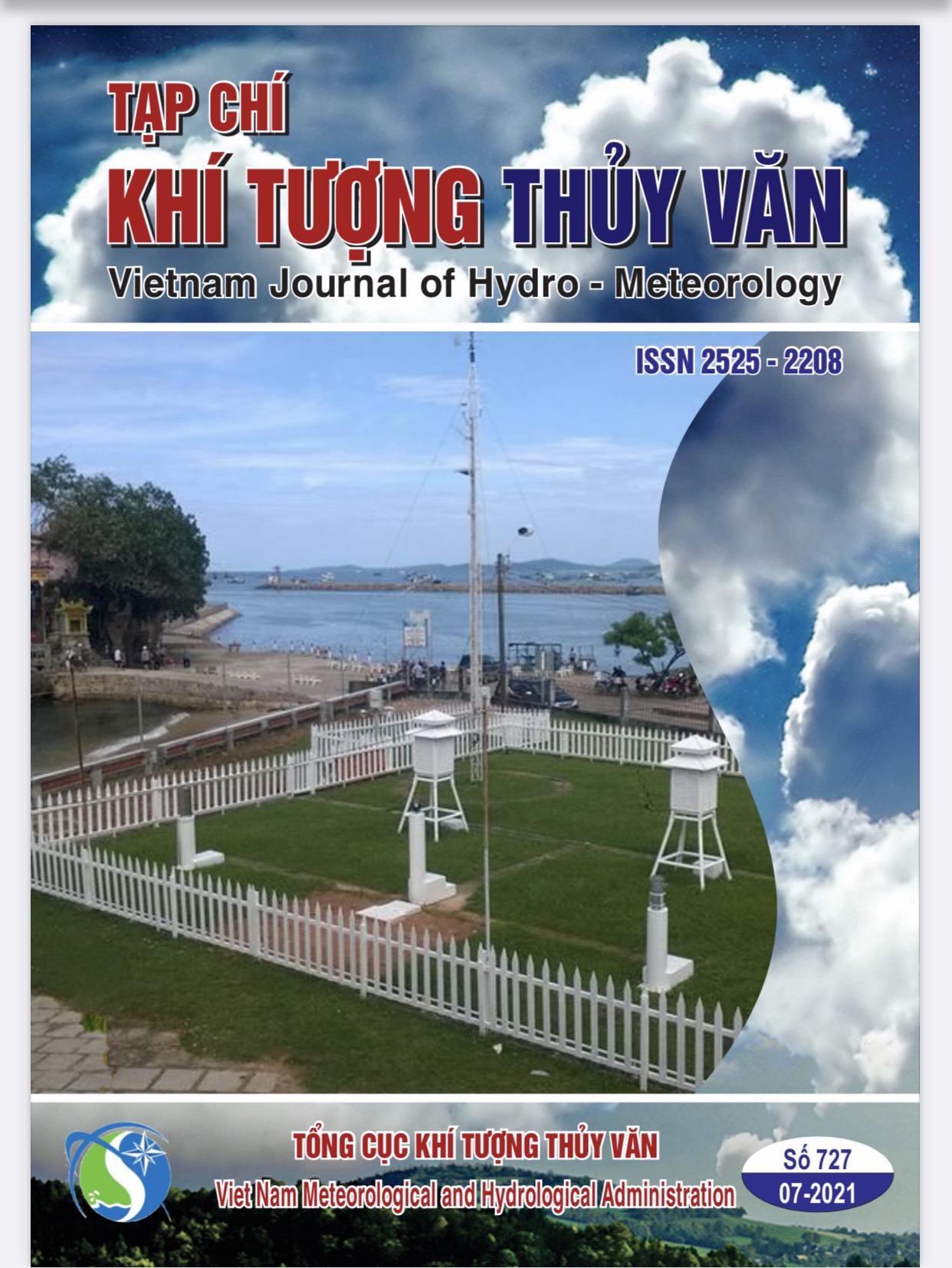
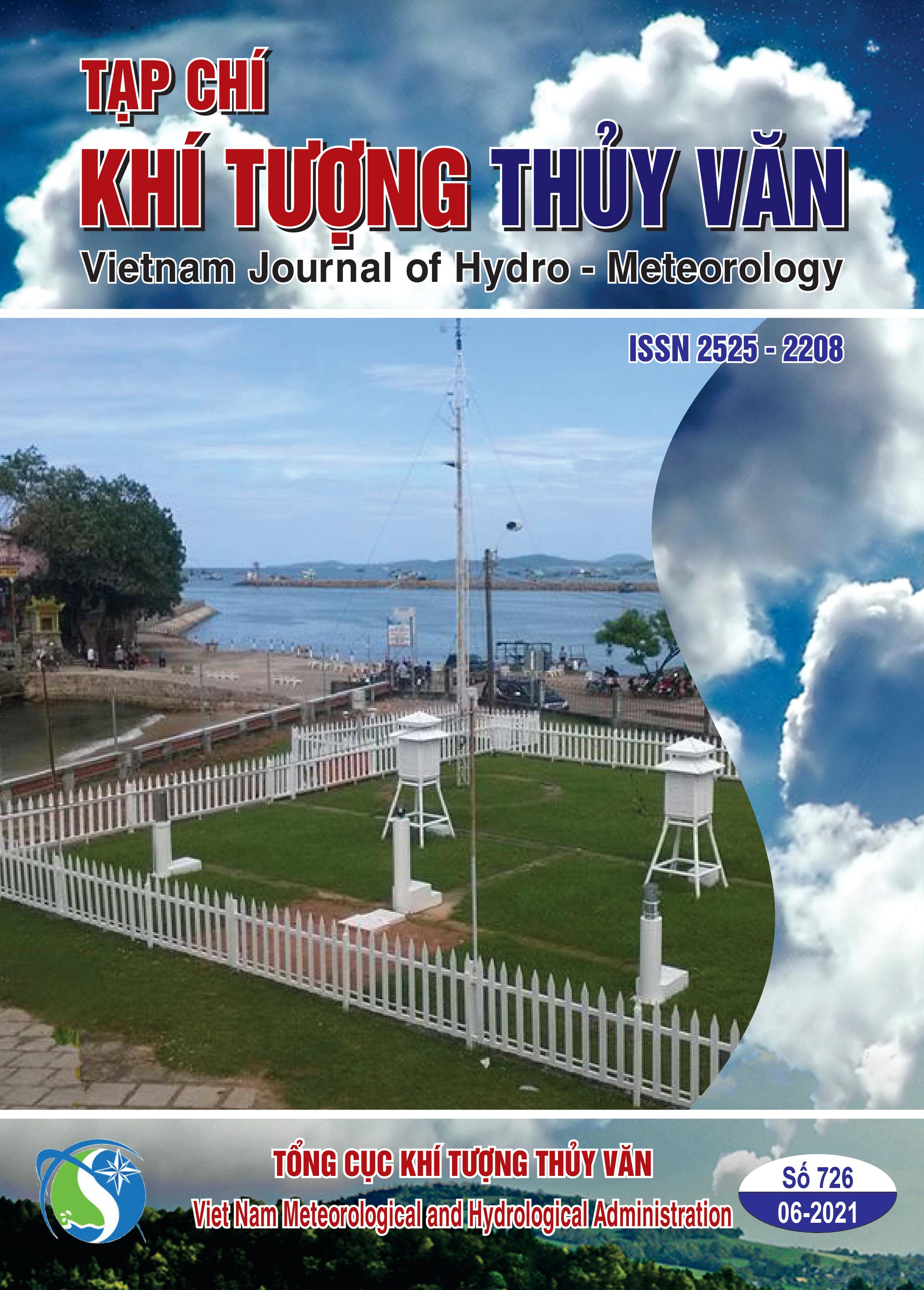

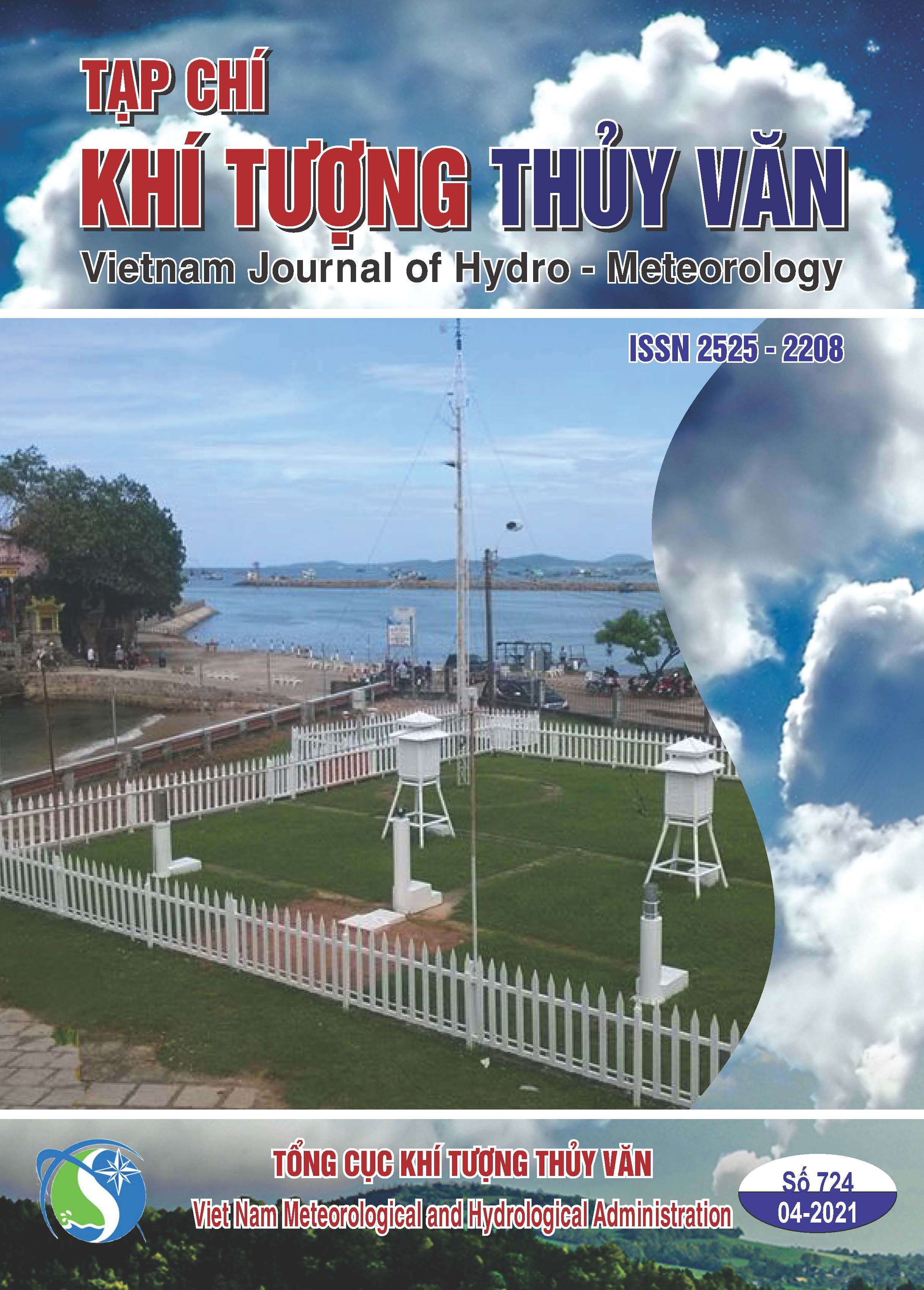
.png)
.png)
 Theo Trung tâm Dự báo khí tượng thủy văn quốc gia, hồi 4 giờ ngày 11-11, vị trí tâm bão số 7 ở vào khoảng 17,5 độ Vĩ Bắc; 111,8 độ Kinh Đông, trên vùng biển phía Bắc quần đảo Hoàng Sa. Sức gió mạnh nhất vùng gần tâm bão mạnh cấp 8, giật cấp 10. Di chuyển theo hướng Tây Nam, tốc độ khoảng 15 km/giờ.
Theo Trung tâm Dự báo khí tượng thủy văn quốc gia, hồi 4 giờ ngày 11-11, vị trí tâm bão số 7 ở vào khoảng 17,5 độ Vĩ Bắc; 111,8 độ Kinh Đông, trên vùng biển phía Bắc quần đảo Hoàng Sa. Sức gió mạnh nhất vùng gần tâm bão mạnh cấp 8, giật cấp 10. Di chuyển theo hướng Tây Nam, tốc độ khoảng 15 km/giờ. 
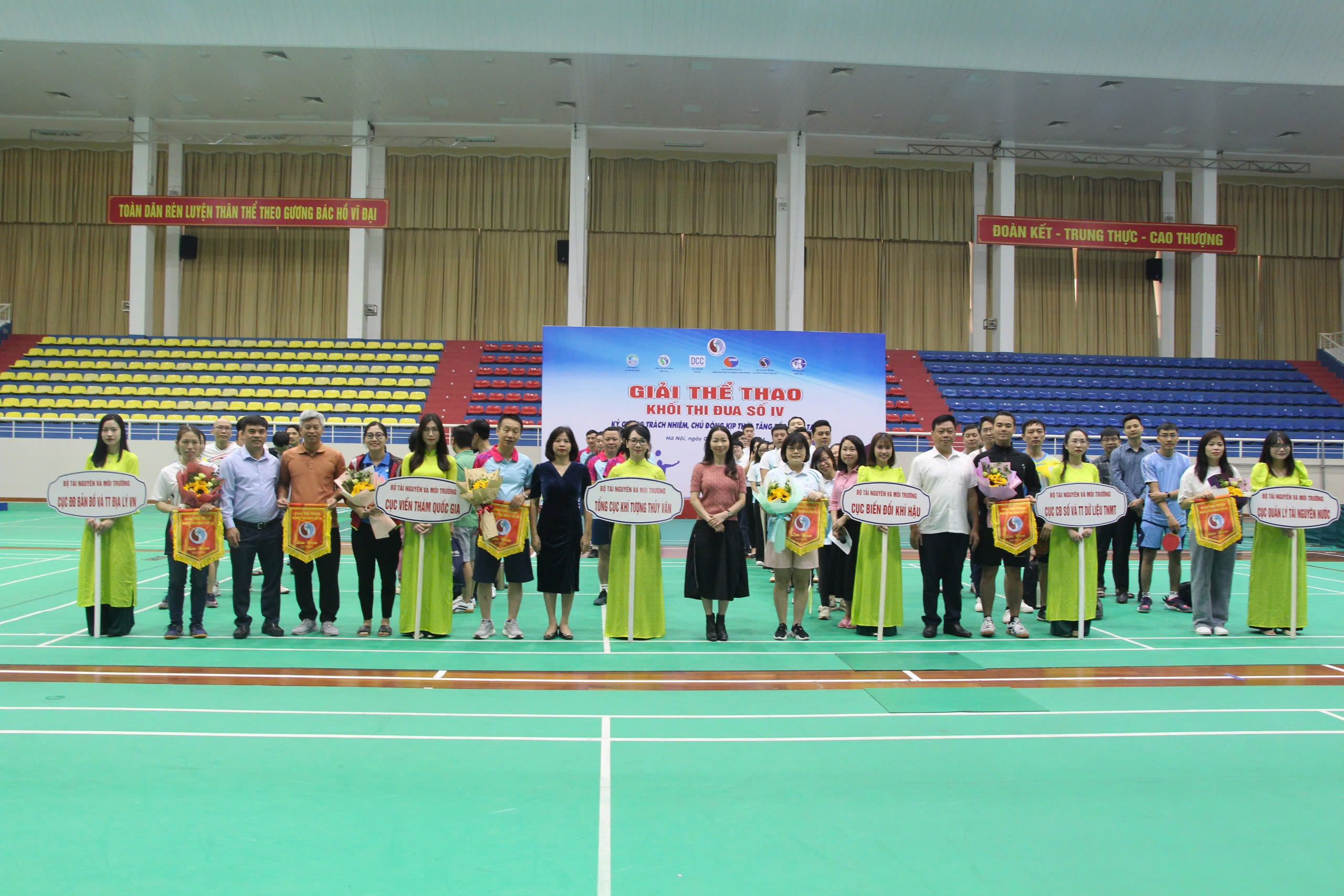
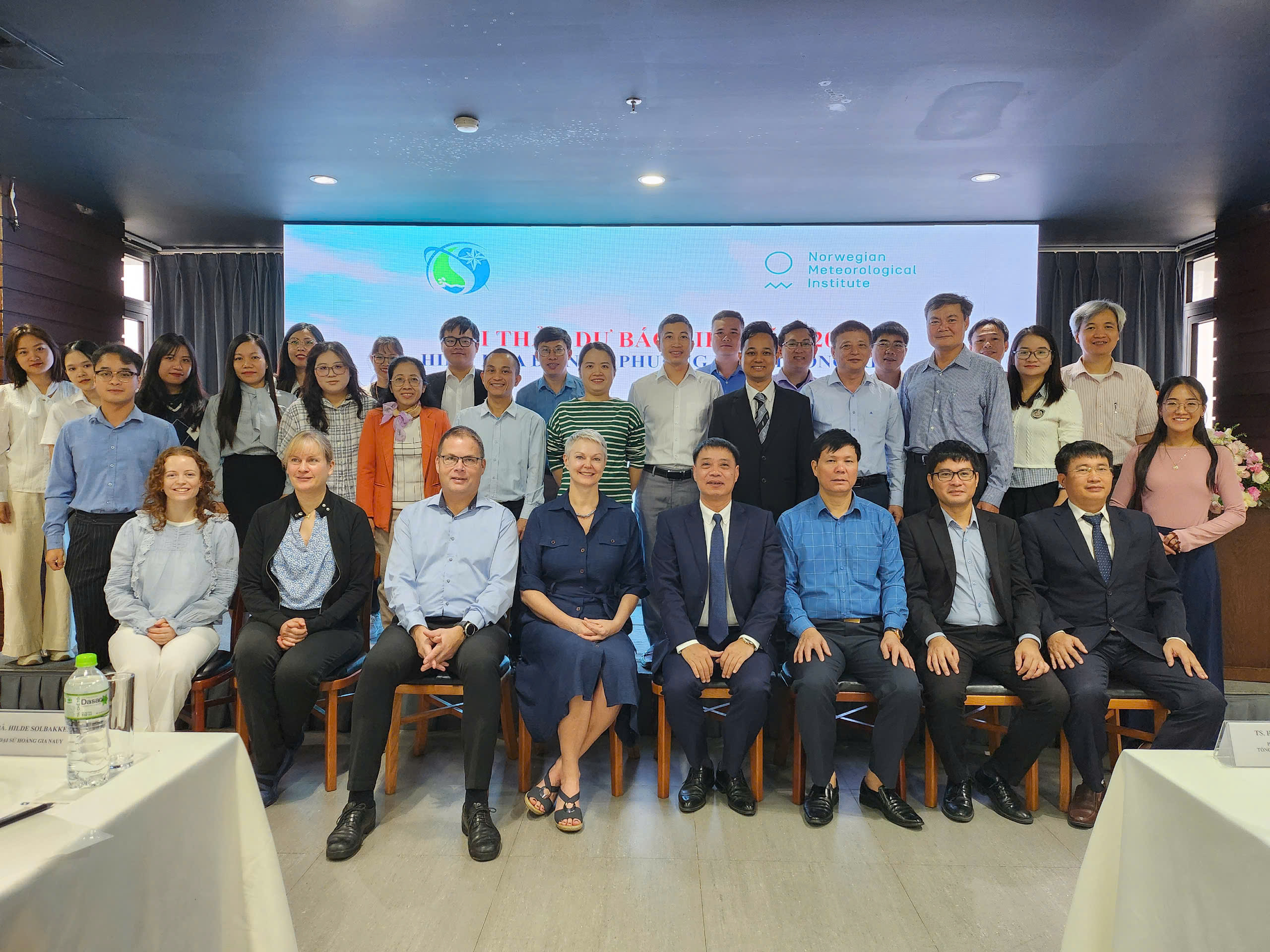
.jpg)
